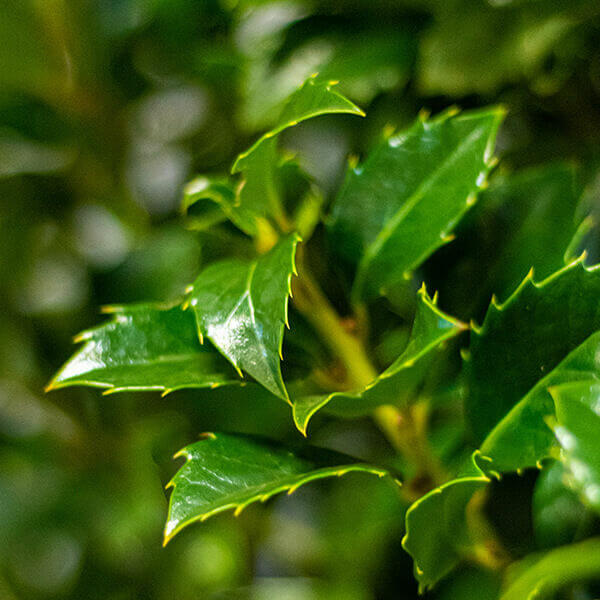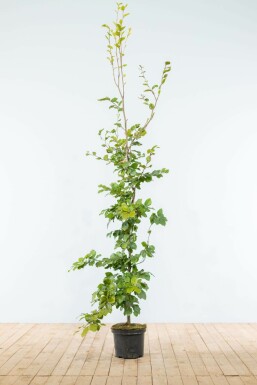Hedging Plants For Attractive Borders
Improve your garden's allure with rich hedge varieties such as Yew (Taxus), Thuja, Laurel, Photinia, and Bamboo, celebrated for their structural integrity and ecological advantages.
Yew and Thuja supply evergreen coverage and winter durability, while Laurel offers rapid development and broad, aromatic leaves.
Photinia includes seasonal charm with its vibrant red foliage, and Bamboo provides a low-maintenance, serene atmosphere.
These hedges enhance air quality, decrease noise, and develop tranquil, personal spaces.
Proper planting, spacing, and upkeep guarantee vigorous development and eco-friendly consistency.
Explore how these lush ranges can elevate your garden's charm and well-being.
Secret Takeaways
Transform Your Garden With Lush Hedge Varieties
- Select Yew for its thick, evergreen growth and exceptional longevity.
- Choose Laurel for its quick development and broad leaves, guaranteeing quick personal privacy.
- Choose Photinia for its lively seasonal foliage, which turns a striking dark red.
- Use Bamboo for a low-maintenance, winter-hardy hedge with visual appeal.
- Space plants 2-3 per meter and prune frequently for ideal development and health.
Popular Hedge Plants
When transforming a garden with lavish hedge varieties, it's important to think about popular hedge plants such as Yew, Thuja, Laurel, and Photinia due to their unique qualities and benefits.
Yew (Taxus) is extremely esteemed for its durability and dense, green growth, making it a prime option for enduring landscapes.
Thuja is noted for its evergreen foliage and robust winter strength.
Photinia adds seasonal vibrancy with red leaves that darken with time, producing vibrant visual appeal.
Laurel provides quick growth and fragrant, broad leaves, perfect for quick personal privacy.
In Addition, Bamboo is an outstanding option for ambiance, providing a low-maintenance, winter-hardy choice that boosts the garden's visual with its sophisticated, swaying canes.
These choices cater to a range of horticultural needs and preferences.
Benefits of Garden Hedges
Garden hedges use a wide range of advantages, making them a valuable addition to any landscape. These natural barriers are cost-effective to carry out and provide substantial wind protection, improving air blood circulation and contributing to noise decrease. The thick foliage of hedges like Thuja and Beech makes sure personal privacy by blocking presence, creating a peaceful and remote environment.
Hedges likewise play an essential role in microclimate policy, offering a steady environment that cultivates plant development and minimizes temperature changes. Their complex leaf structures filter contaminants, enhancing air quality and contributing to a healthier garden community.
Furthermore, hedges excel in noise reduction, absorbing and deflecting sound waves to lower ambient sound levels. This double performance of offering both visual and acoustic privacy enhances the overall harmony and visual appeal of any garden.
Planting and Upkeep Tips
For an effective hedge, meticulous preparation of the planting location is important. Make sure the soil has appropriate pH and drain to support strong root development.
Space the plants properly for the picked types. Water the hedge frequently during its initial growth phase, changing as required with seasonal modifications.
Implement a methodical insect control and illness avoidance method, utilizing chemical or natural treatments when required. Routinely examine for aphids, mites, and fungal infections.
Apply mulch to keep wetness and reduce weeds. Seasonal pruning promotes thick growth and air flow, vital for plant health.
Following these standards will assist you cultivate a lively, well-maintained hedge that enhances the appeal of your garden.
Spacing and Cutting Standards
Spacing and Cutting Guidelines
Proper spacing and trimming are essential for cultivating healthy, visually appealing hedges. Adequate spacing makes sure each plant gets adequate nutrients, light, and airflow.
Follow these guidelines for optimum hedge upkeep:
- Spacing: Position hedge plants 2-3 plants per meter to encourage robust growth.
- Pruning Techniques: Routine pruning is vital for preserving desired hedge height and shape. Cut new growth in summer season and cut back older wood during winter season.
- Seasonal Care: Adjust trimming schedules and approaches according to seasonal requirements to guarantee plant health.
- Hedge Height: Frequently display and trim to keep the wanted hedge height and accomplish uniform visual appeals.
Abiding by these steps will guarantee your hedge prospers, improving both the appeal and performance of your garden.
Selecting the Right Hedge
Picking the Right Hedge
Choosing the proper hedge includes assessing factors such as mature height, foliage density, and ecological durability. Effective hedge plant selection needs understanding each species' development characteristics and site-specific flexibility.
For example, Yew (Taxus) provides excellent longevity and thick growth, while Thuja is noteworthy for its winter season resilience. Furthermore, thinking about upkeep requirements is crucial; fast-growing types like Laurel or Privet need regular trimming, whereas low-maintenance alternatives like Bamboo or Ivy may be more suitable for those looking for very little maintenance.
Environmental factors such as soil type, light accessibility, and wetness conditions need to likewise guide the selection process. This careful approach guarantees the selected hedges will prosper, supplying both visual and functional advantages to the garden landscape.
Shipment and Planting Advice
To ensure your hedge plants thrive, they should be delivered by specialized couriers and planted quickly upon arrival.
Follow these important steps for successful planting:
- Soil Preparation: Enrich the soil with organic matter to improve drainage and nutrient material.
- Planting Depth: Produce a trench twice the width and equal to the depth of the root ball.
- Watering Methods: Water thoroughly after planting, keeping the soil consistently moist however not filled.
- Mulching: Use a layer of mulch to keep moisture and suppress weeds.
Consumer Assistance and Service
Provided the essential role of prompt support in horticultural pursuits, our customer assistance group is offered six days a week through telephone, e-mail, and social networks to provide expert suggestions and quickly deal with any issues. Their commitment to quick action times makes sure client satisfaction by solving inquiries related to plant health, ideal planting methods, and upkeep schedules.

Interaction Technique
Within 48 hours
This comprehensive assistance system, reinforced by an outstanding 9.3/ 10 customer score, highlights our dedication to enhancing the gardening experience for every single client.
Regularly Asked Questions
For How Long Does It Consider Hedge Plants to Establish?
Hedge plants typically need one to three years to become completely established, with the precise period differing by species and growing conditions.
Efficient care during this vital period is vital for robust development. Constant watering, vigilant weed control, and appropriate fertilizer application are essential in promoting strong root advancement.
For example, fast-growing types like Laurel may establish faster, while slower-growing varieties such as Yew might take longer. Persistent upkeep speeds up the establishment process, leading to thick and healthy hedges.
What Are the Best Hedge Plants for Privacy?
The concern of the very best hedge plants for privacy involves assessing evergreen and deciduous choices.
Evergreen hedges like Thuja, Laurel, and Cypress supply year-round protection, making sure continuous privacy.
In contrast, deciduous hedges such as Beech offer seasonal privacy, shedding leaves in colder months.
Secret upkeep suggestions for personal privacy hedges include regular cutting, fertilizing in spring, and proper spacing-- usually 2 to 3 plants per meter.
In addition, consistent watering and persistent weed elimination are crucial for promoting healthy, thick development.
Can Hedge Plants Attract Wildlife to My Garden?
Yes, hedge plants can attract wildlife to your garden by offering necessary benefits like shelter, food, and nesting sites, consequently boosting local biodiversity. For example, yew, holly, and laurel are exceptional for bring in birds, while ivy supports a variety of insects.
However, it is very important to note that there are some downsides, such as increased maintenance to handle bugs and routine maintenance. Carefully selecting and preserving hedge ranges can assist balance these benefits and disadvantages, ultimately promoting a dynamic and sustainable community in your garden.
Exist Any Blooming Hedge Plants Available?
Yes, there are flowering hedge plants readily available that can improve the charm of your garden.
For instance, Elaeagnus, likewise understood as Olive Willow, produces aromatic white flowers in the fall, including a touch of sophistication.
Photinia, another popular option, showcases dynamic red leaves that develop into a rich green, creating a dynamic visual effect throughout the seasons.
To make sure these plants grow, it's necessary to practice correct pruning methods and seasonal maintenance, such as trimming new development in the summer season and cutting back in the winter season.
These procedures will help maintain the health and aesthetic appeal of your blooming hedges.
How Do I Avoid Pests in My Hedge Plants?
To avoid bugs in hedge plants, utilize natural pest control approaches and keep appropriate hedge care. Introduce helpful bugs like ladybugs, which take advantage of harmful bugs, to produce a balanced environment.
Routinely inspect your hedges for indications of problem and without delay eliminate any affected parts to avoid the spread. Ensure the health of your hedges by using balanced fertilizers and providing sufficient water.
Utilize mulching to maintain soil moisture and appropriate spacing to minimize plant stress and promote robust development. These practices collectively assist in lessening pest concerns and maintaining a healthy hedge.
Conclusion
In essence, picking the right hedge ranges such as Yew, Thuja, and Laurel can transform any garden into a serene haven. These plants supply year-round greenery, boost aesthetic appeal, and deal useful benefits like sound reduction and wind security.
Correct planting techniques, precise spacing, constant watering, and seasonal trimming are crucial for optimal growth.
Dependable shipment services and skilled customer assistance make sure a seamless experience from purchase to planting, making it simpler than ever to raise your outside space.
Garden hedges provide a multitude of benefits, making them an important addition to any landscape. These natural barriers hedging plants are cost-effective to implement and offer substantial wind protection, enhancing air flow and contributing to sound decrease. The thick foliage of hedges like Thuja and Beech ensures privacy by obstructing presence, developing a serene and secluded environment.

Pruning Strategies: Routine pruning is vital for preserving desired hedge height and shape. Cut new development in summertime and cut back older wood during winter season.